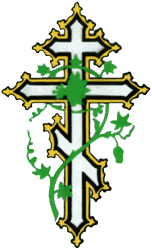In the last issue of this article, I shared with my readers that one modern author suggests that the spiritual path consists of nine stages of development which can be understood in terms of the development of consciousness. He warns, however, that the nine stages are not to be understood as neat little boxes. First, the levels of consciousness can overlap to some extent. Second, beginning with the development of the human mind, we can repress parts of our consciousness that we don’t like and these parts of ourselves can remain “stuck” at the lower levels and drain our energy so much that they can prevent our advance to the highest spiritual levels.
 Third, a person can pass to the next level of consciousness without full mastery of the level below. Only basic competence at one level of consciousness is normally required before going to the next level. Fourth, things can go wrong at every level.
Third, a person can pass to the next level of consciousness without full mastery of the level below. Only basic competence at one level of consciousness is normally required before going to the next level. Fourth, things can go wrong at every level.
I know that this probably sounds more like psychology than spiritual theology. I truly believe that it is using psychological knowledge to help us, since we are humans, to understand the process of spiritual development. If we know how human consciousness develops, then we can use this knowledge to help us understand more clearly spiritual development. The first level of human consciousness is the archaic and normally lasts into the third year of an infant’s life. It is primarily a physical level of consciousness and is ruled by sensations and impulses. It develops through two essential spiritual passages: First, the infant’s differentiation of its own body from that of the mother, and second, the later differentiation of the infant’s emotions from those of the mother. Critical spiritual principles can be drawn from these two passages, principles that will apply throughout the spiritual path. For example, each level of spiritual development, like consciousness, will be less egocentric than the last.
